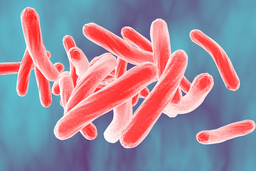Novel Structure-Based Rifamycins for Drug-Resistant TB and HIV Co-Infection
TECHNOLOGY NUMBER: 2021-114

OVERVIEW
A group of new therapeutic compounds capable of targeting a novel RNA polymerase site- Proven activity against both the replicating and dormant states of tuberculosis bacteria
- Properties that permit efficacy in patients with TB and HIV coinfection
BACKGROUND
Tuberculosis (TB) is one of the most significant world health problems, and a high proportion of these new cases and deaths occurs in HIV-positive people in Africa. Global population growth is increasing the disease burden, posing a continuing health and financial burden in various parts of the world, particularly Africa and Asia. TB is caused predominantly by Mycobacterium tuberculosis (MTB), an obligate aerobic bacillus that divides at an extremely slow rate. The chemical composition of MTB cell walls includes peptidoglycans and complex lipids, which are a significant determinant of its virulence. The unique structure of the cell wall of MTB allows it to lie dormant for many years as a latent infection, particularly as it can grow readily inside macrophages, hiding it from the host's immune system.
The continuing rise in multidrug-resistant TB has further contributed to the dire need for new TB antibiotics as few new TB drugs have been introduced into clinical use in the last four decades. Furthermore, effective treatment of TB in persons co-infected with HIV is complicated due to drug–drug interactions. The rifamycins (RIFs) are the most commonly used drugs to treat MTB, and their mechanism involves inhibition of RNA polymerase (RNAP). However, these agents suffer from serious drawbacks including prolonged treatment times, enhanced drug metabolism due to cytochrome p450 induction (which can be particularly problematic for patients with HIV-MTB co-infection), and the existence of resistant mutations within RNAP that yield RIF-resistant (RIFR) MTB strains. A need therefore exists for novel and improved forms of TB therapy which can better manage the complexities of treating this disease.
INNOVATION
Researchers have synthesized and tested 69 benzoxazino-rifamycins (bxRif) that extend the rifamycin core to target a locus of the RNAP enzyme which has not previously been exploited as a target to treat MTB. The inventors have confirmed by X-ray crystal structural analysis that these BxRifs bind to the RNAP enzyme locus site as well as displaying that the compounds have bactericidal activity against both the replicating and latent states of MTB. Furthermore, the activity of the agents was shown to apply to both the wild-type and most prevalent mutant MTB RNA polymerases (RNAPs). The agents were also shown to be free of induction by the cytochrome p450 system, which has been shown to limit the activity and delay the effects of some classes of MTB drugs. The expectation of this novel approach to MTB treatment is that new RIF analogues will yield a candidate for early-stage development studies that provide a rifamycin analogue that allows for shorter treatment times, and which has enhanced activity against strains of TB currently resistant to rifamycin-derived drugs.